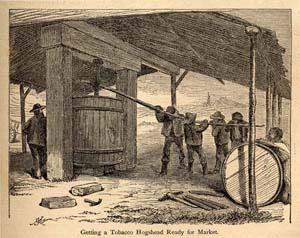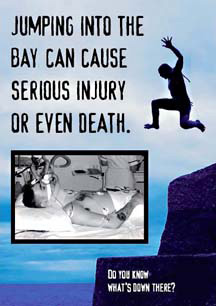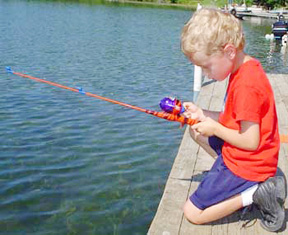
Volume XVII, Issue 37 # September 10 - September 16, 2009 |
 |

 A Fifth Century for Maryland Tobacco
A Fifth Century for Maryland Tobacco
Our traditional crop hangs on by a leaf
Ready for harvest is the last of Maryland tobacco.
In acres, it’s so few that nobody bothers to count it. Way, way down from the 18th century glory days, when Maryland produced 100 million pounds of its historic cash crop.
Even way down from the 11.9 million pounds produced in 1998, the year before Maryland’s tobacco buyout, which used five percent of Maryland’s $4.4 billion share of the national tobacco settlement as incentive to push farmers out of the tobacco business.
Ninety-four percent of Maryland tobacco farmers have taken the buyout. Since 1998, that means, 7.8 million pounds of tobacco have been taken out of production.
Mike Phipps of Calvert County, who is president of the Maryland Farm Bureau, is one of the few exceptions, farmers who keep planting and harvesting tobacco despite the collapse of the industry. Phipps planted and is now harvesting less than an acre because, he says, “I like fooling with Maryland tobacco.”
Other persistent Southern Maryland tobacco farmers have found a new market: American tobacco companies have replaced the German and Swiss buyers who blended Maryland’s traditional tobacco, type 32, to give cigarettes a nice, steady burn.
To suit the new market, Maryland farmers are planting type 31 or burley, a narrower-leaf cousin blended with heat-cured tobacco for cigarettes.
Like Maryland’s traditional tobacco, burley is stripped from the stalk in mid-August to mid-September, speared and air-dried in open-slatted barns, by and large another casualty of tobacco’s passing.
Also gone is Maryland’s traditional spring tobacco auction, when bales of tobacco — harvested in late August and dried in open barns over winter — were sold to the highest bidder as the chanting auctioneer led buyers through fragrant aisles in drafty wooden tobacco warehouses.
Now, tobacco farmers contract with a company to supply so many pounds at a price per grade established by the buyers.
Maryland tobacco is a small part of the largest burley crop in over 10 years, 2009’s 200 million-plus pounds grown as far away as Africa and South America, as well as in a half dozen American states.
Another change: Maryland burley is now delivered to Pennsylvania. That’s ironic, according to Maryland’s Secretary of Agriculture Buddy Hance, himself a former tobacco farmer. “Back in the early 1990s,” Hance said, “when the Pennsylvania Amish were hauling their tobacco to Maryland to sell, there was a feud between Maryland and Pennsylvania tobacco.”
Since Maryland’s tobacco buyout, production of cigarettes in the U.S. has dropped 30 percent as smoking declined, two to three percent each year over two decades. Cigarette export has dropped even more precipitously, from a high of 243.9 billion cigarettes in 1996 to 89 billion in 2007.
–Sandra Olivetti Martin

Our Hapless Neighbors
Better ways to avoid paying beach admission
It’s tempting to speculate on her motivation. Summer’s end was perhaps too much to bear. Or beach admission (up to $8, depending on your age and address) too expensive to afford. For whatever reason, an August 31 visitor to the North Beach public beach and boardwalk climbed onto a railing above the water and threatened to jump into the water below. Shallow water. Notoriously shallow water. Water so shallow that drowning was less a risk than a broken neck as that part of the beach had washed away after a heavy mid-August rain.
Jump she did, and a Calvert County sheriff’s deputy followed. He, at least, was not injured.
–From recent police reports

 This week’s Creature Feature
This week’s Creature Feature
Pets breathe a little easier
Invisible Fence Company’s Michael Hubbard donated six (three large and three small) Pet Resuscitation Oxygen Masks to Anne Arundel County Fire Chief John Robert Ray to help save furry friends who’ve suffered smoke inhalation.
The conic masks easily fit over the muzzles of cats and dogs, allowing firefighters to give animals oxygen without resorting to mouth-to-snout resuscitation — a practice that can lead panicked pets to bite. The pet masks seal around animal muzzles tighter than the human masks can, making it easier for firefighters to give the correct amount of oxygen to distressed dogs and cats.
Similar masks are helping furry friends around the country.
But the masks can’t save every animal companion. They are too big to fit small rodent or reptile pets, so you’ll have to teach your hamster to stop, drop and roll.

